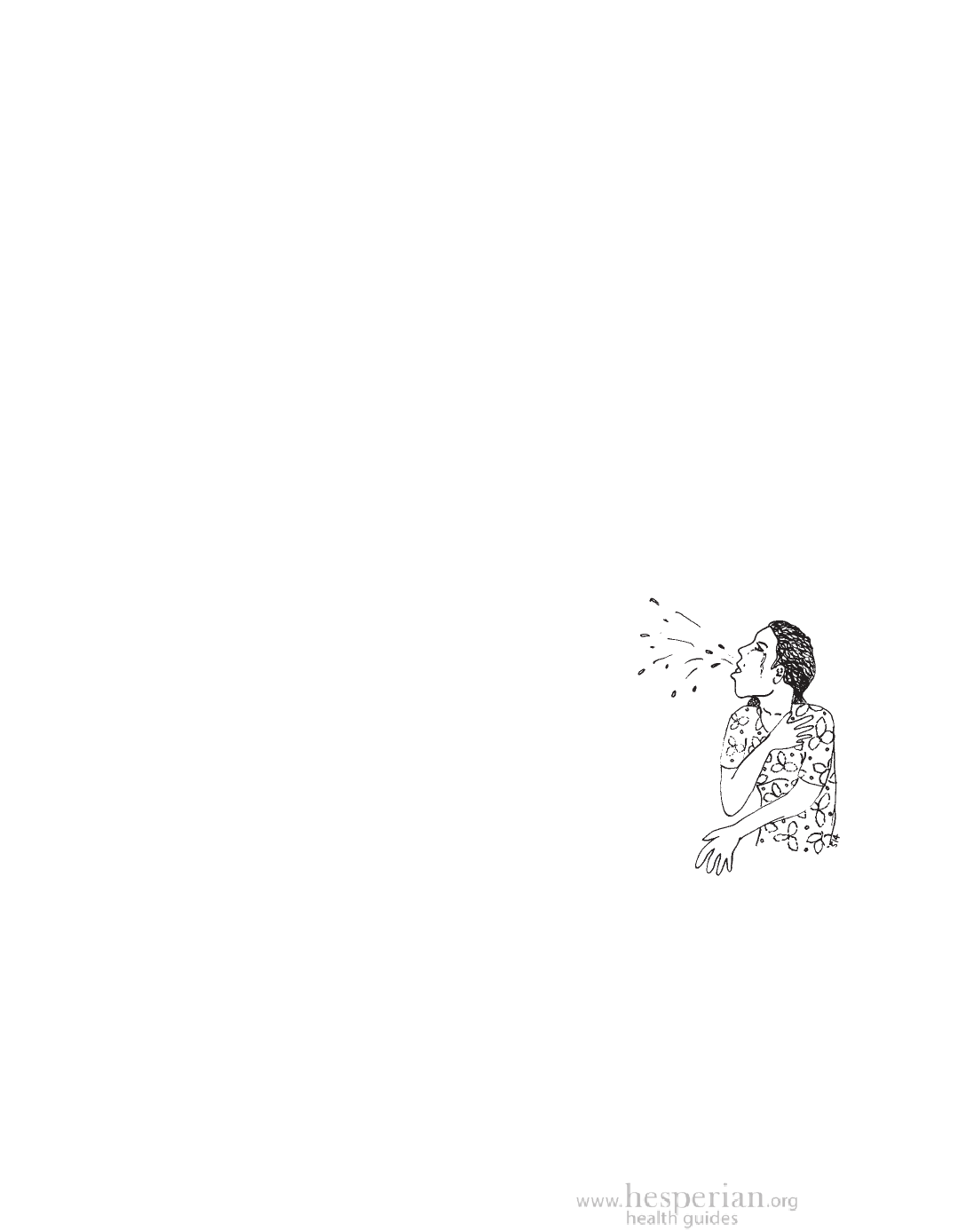
356 A Healthy Home
Tuberculosis (TB, consumption)
Tuberculosis (TB) is a disease that most often affects the lungs. It passes easily
from person to person because when someone with TB coughs, the germs get
into the air and live for many hours, letting other people breathe in the germs.
TB spreads quickly in crowded homes and neighborhoods, in factories, work
camps, prisons, refugee camps, and other places where people live or work
closely and there is little ventilation.
Who gets sick from TB germs?
Many people have TB germs in their bodies, but only 1 out of 10 of them will get
sick with TB. People are more likely to get sick if they are already weak from
illnesses like asthma, malaria, or HIV, or if they are very young, very old, or
malnourished. Smoking tobacco and breathing polluted air increase the risk of TB.
Signs
Tuberculosis is curable if it is treated early and completely. A person may have
all or some of these signs when they first get sick:
• a cough that lasts longer than 3 weeks, often worse just after waking up
• a slight fever in the evening and sweating at night
• pain in the chest and upper back
• steady loss of weight and increasing weakness
Young children may have frequent fevers, steady weight
loss, swellings in the neck or belly, or a lighter skin color.
Treatment
If you think you may have TB, cover your mouth or cough
into your shirt when you cough around other people, and wash
your hands often. Go to a clinic right away. If the health worker
finds you have TB, you will need to begin taking medicines.
To cure TB, people take 4 different medicines every day for
2 months, then, if they are getting better, 2 or 3 medicines for
another 4 months. If someone in the home has TB:
• Test the whole family for TB and
begin treatment for those who are sick.
• Vaccinate all children against TB.
• The person with TB should eat and sleep apart
from the children if he or she has any cough at all.
People with TB should
cover their mouths
when they cough and
not spit on the floor.
TB is less of a problem when homes and workplaces are well-ventilated. But as
long as people in the community have TB germs, it will be a threat. Reducing
poverty and training people to recognize and treat TB are more likely to stop
the spread of TB than any other solution. To learn more about the signs of TB
and ways to prevent and treat it, see a health worker or a general health care
book such as Where There Is No Doctor.
A Community Guide to Environmental Health 2012